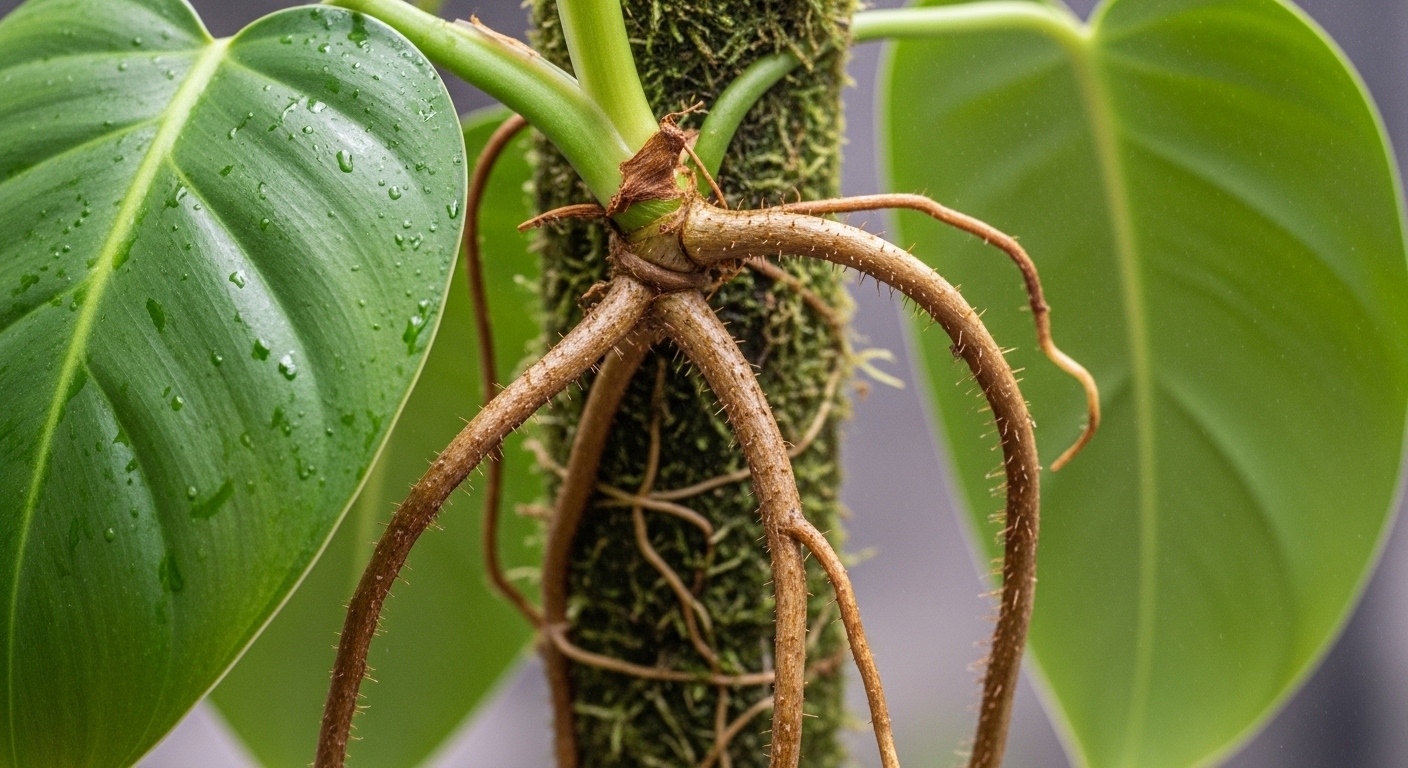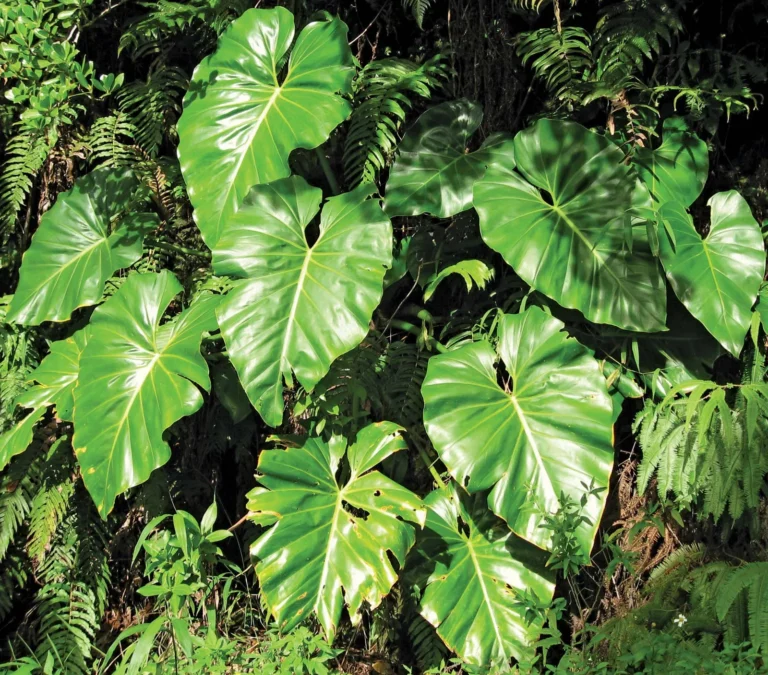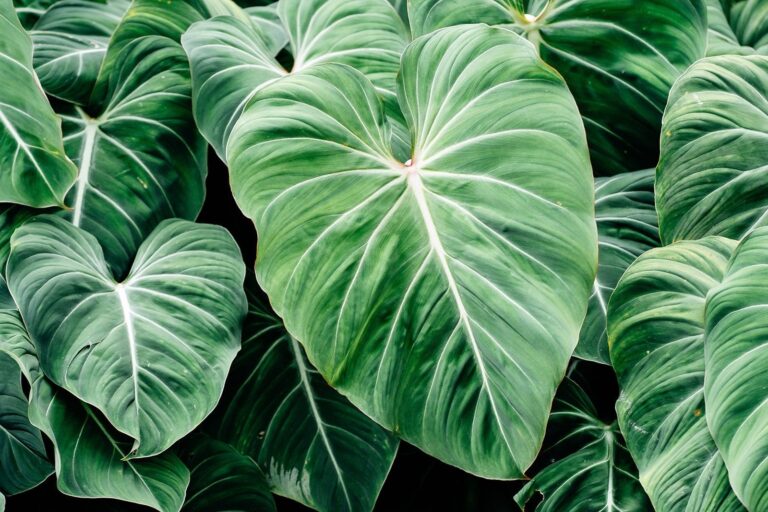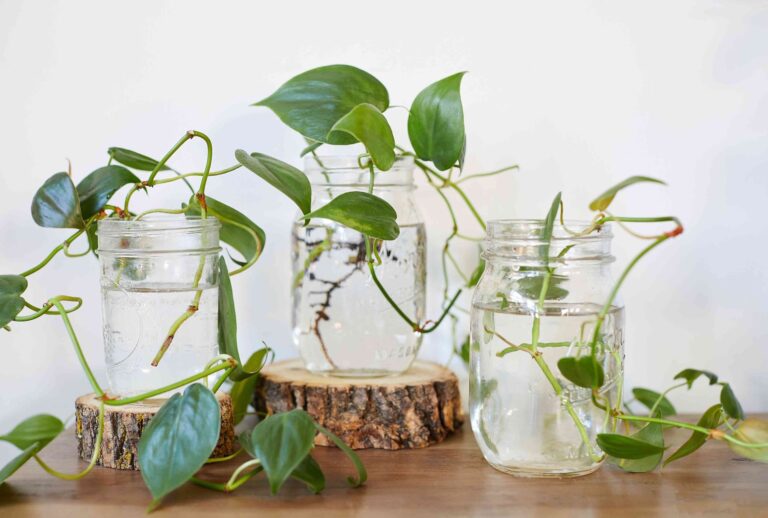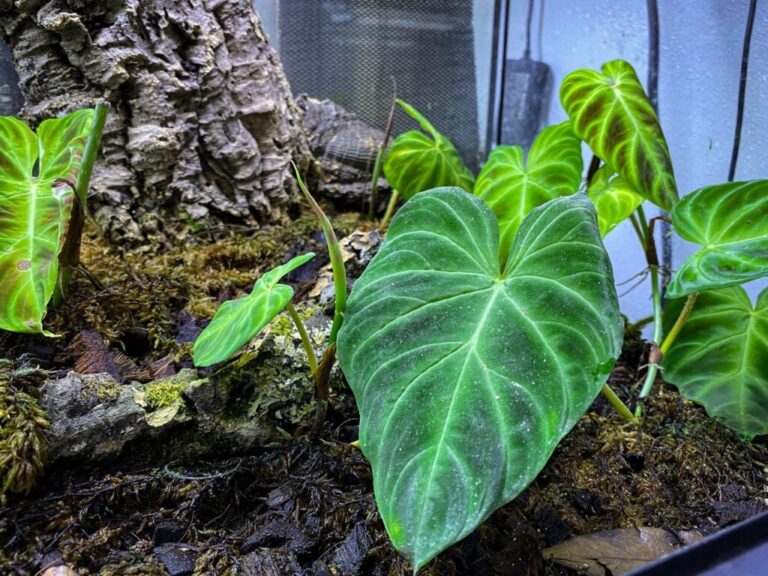Philodendron Aerial Roots: Complete Function, Care & Management Guide
Aerial roots of your philodendron aren’t random brown growths — they’re intelligent biological devices that can make all of the difference in the health and appearance of your plant if you understand them. Many of these fascinating adaptations fulfill key functions that your average plant parent would do well to uncover – opportunities for growth and success through their plants.
Understanding the Biological Purpose of Philodendron Aerial Roots
Aerial root formation is one of nature’s most complex engineering breakthroughs designed for tropical forest survival. Unlike their subterranean relatives, the specialized structures, which are built from stems and nodes, are multifunctional adaptations that have enabled philodendrons to dominate their native habitat for millions of years.
Philodendrons, who, as hemiepiphytes, start life on the ground as forest plants before they grow to the top by climbing towards the canopy, are the key biological antecedents of aerial roots. With distinctive attachment behavior under these ascending conditions, aerial roots give a strategy for climbing that has very special properties.
It has been shown that climbing philodendrons grown with the appropriate vertical support produce leaves which are 300–500% larger than those of unsupported plants, and heart-leaf philodendron leaves grow to more than 30 cm, as compared to 10–20 cm when left to reach a level of root growth and climbing.
Primary Functions: Structural Support and Climbing Mechanisms
Aside from structural support, aerial roots are effective systems for acquiring nutrients. In a recent scientific study, it was discovered that aerial roots consistently took up nitrogen more effectively than soil roots; so aerial roots are seen as critical to plant nutrition.
This increased uptake capability is due to the specific tissue in a plant called velamen, a spongy, multilayered structure like botanical paper towels that can easily absorb moisture and nutrients produced by humid air, rain and organic matter around a plant and so much more, from surrounding soil.
Environmental Sensing and Adaptive Growth Patterns
The sensing ability of aerial roots is also extraordinary in terms of environment. Mechanosensitive responses can tell them how near they are to supports — they can use energy for roots just in those directions. Metabolic resources will also switch in response to climbing opportunities as if those opportunities are present, releasing into the environment metabolic resources to grow longer and stronger aerial roots, which can encircle structures and establish a secure attachment.
The Role of Aerial Roots in Hydration and Nutrient Absorption
The collection of aerial roots has much more complex physiological functions than just water uptake and these are not simple processes that only capture water, but also represent physiological actions which provide a route to thrive in harsh conditions for philodendrons. Understanding these mechanisms also shows the mechanisms underlying why the environments can heavily affect the development and function of the aerial roots.
How Humidity Affects Aerial Root Performance
Humidity condition can provide a direct influence on aerial root performance: the aerial roots act by the best absorption around 70-80% humidity. At these sites, aerial roots can gain air moisture from specialized epidermal cells, which swell and contract according to the surrounding environment.
This process – termed hygroscopic absorption – enables philodendrons to increase their water intake if the soil moisture level is low. Soil roots also have some element ion exchange that is more effective for nutrient absorption.
Specialized Nutrient Uptake Mechanisms
Aerial roots are ideally adept at capturing nitrogen compounds, ammonia and nitrate in nitrogen compounds, for instance of ammonia and nitrate in the atmosphere. This is highly beneficial in nitrogen-poor systems where nitrogenous soil-based nutritional resources are needed, but not enough to grow properly.
The absorption rates are also influenced by temperature differences, for which the peak efficiency is mainly from 70–85°F (21–29°C) when temperatures fluctuate. Colder temperatures impede metabolic processes, limiting absorption capacity, and excess heat can injure sensitive root tissues. Optimal functioning of these specialized structures is guaranteed by optimal temperature moderation.
Backup Systems During Plant Stress
The importance of the aerial roots as stress back-up systems becomes evident. If soil roots fail, get compacted, or contract diseases in the field, aerial roots often help compensate by enhancing their absorption at least to some degree. This redundancy mechanism helps to explain philodendrons’ ability to survive harsh conditions on the order of the one that would wipe out plants that would have no such adaptations.
Climbing Support Mechanisms and Training Techniques
This explains why climbing support mechanisms and training techniques. The climbing apparatus provided by the philodendron aerial roots above ground for climbing in the aerial root system, the climbing support system, is a delicate biomechanical engineering of great mechanical design using the flexibility and remarkable strength. These roots don’t only loop around supported positions in support — they sprout through and through surfaces to form attachments, which are embedded and permanent, carrying large amounts of plant weight.
The Three Stages of Natural Climbing Behavior
Climbing takes place during the detection, attachment, and consolidation stages of natural climbing. On detection aerial roots appear to grow in a positive way toward nearby props (in response to touch stimuli), a development referred to as positive thigmotropism. This effect can take place prior to the roots forming physical connections with surfaces, indicating the need for chemical or electric signaling systems to mediate response.
Attachment is formed by specialized root hairs that produce adhesion compounds, which establish a first bond with the surfaces in support. As the roots form more growth rings and secondary tissues, these temporary connections begin to develop.
In the consolidation stage, roots are fully integrated into the structure as the roots become so well connected that root, support and support can be damaged due to the root’s decay with root removal.
Optimal Timing for Support Introduction
Indoor cultivation should start before plants are of the size which depends upon support. Approaching and introducing moss poles, trellises or other climbing structures at a young philodendron’s age makes way for the aerial roots to establish attachment patterns naturally on the ground. The attempt to teach mature plants is usually complicated, with long established growth practices not susceptible to manipulation.
Choosing the Best Climbing Surfaces
Moss poles are the most suitable climbing surfaces because the moisture retention ability of sphagnum moss or coconut fiber offers favorable microenvironments for the growth of aerial roots. The top layer of sphagnum moss or coconut fiber coverings helps keep humidity under control so that the roots can attach and grow.
Regular misting of moss poles provides long-lasting moisture support and also ensures proper growth in dry indoor conditions. Alternative support devices may include rough-textured stakes, bark slabs or the application of specialized climbing panels and support systems.
The fundamental features of effective support are the proper texture for root attachment, moisture retention capability, and structural strength to support the weight of mature plant. They will not work well in terms of natural climbing behavior when they use smooth or non-porous materials.
When to Trim vs. Preserve: Strategic Decision-Making for Aerial Roots
Choosing how to trim or retain aerial roots depends on many factors such as plant condition, an aesthetic preference and eventual long-term growth goals. Knowing the implications of both methods allows for decision-making for optimal plant growth.
Understanding the Risks and Benefits of Trimming
The trimming considerations go much further than only being visually pleasing. Not actually, removing roots from the ceiling won’t directly harm plant health, but it can open the wounds and make them a good way for pathogens to enter. Trimmed areas are susceptible to infection for as long as 7-14 days, with adequate care during that period, research suggests.
Sterilized cutting tools minimize risk of infection, while timing trims during active growth stages encourages faster healing. Preservation has all kinds of good things that usually trump the beauty. The roots in the aerial region provide increased plant stability and are particularly beneficial for climbing species which require support for healthy growth.
Environmental Factors in the Trim vs. Preserve Decision
There are major environmental issues factoring into the trim vs. preserve choice. A high-humidity environment encourages rapid growth of aerial roots, rendering preservation a more feasible approach. On the other hand, in the absence of sufficient humidity root development could proceed more slowly and removal may be justified if appearance issues are greater than the beneficial effect on root growth.
This is because the timing of trimming alters response behavior and recovery rates. Trimming in early spring to allow it to develop as time goes by, which aligns with natural growth cycles, usually allows plants to heal faster and under less stress. Avoiding trimming when the environment is stressed — be it with high to low temperatures, drought, or disease — reduces the further stress to the plant.
Propagation Considerations
Propagation concerns also play a role when making trimming choices. Aerial roots can be useful for propagation, especially for plants that are highly rooted. Maintaining healthy aerial roots increases the success of propagation and grants better chances to reproduce plant offspring.
Aerial Root Propagation Methods: Advanced Techniques
An aerial root propagation technique possesses the advantages of being more effective as compared to stem-cutting techniques for establishment time. Knowledge of the specific physiological mechanisms of aerial root germination allows practitioners better control techniques for maximum effectiveness.
Water Propagation with Aerial Roots
In contrast, the most appropriate propagation method involves cutting up cuttings with both aerial roots as well as active growth nodes. Studies have shown that cuttings that possess established aerial roots have 85% propagation success rates compared to 65% for standard stem cuttings. This greater success arises from root tissue pre-existing for the propagation process which still works.
Water propagation methods must sustain aerial root portions above water levels to promote respiration but support for subsequent root growth in underwater nodes in the root sections, and to promote root growth. Changing propagation water every 3-5 days prevents the buildup of bacteria from the developing root system to prevent the disease process.
Although the adding of small amounts of liquid fertilizer may promote root growth, the concentration should not exceed 50 ppm to prevent tissue damage.
Soil Propagation Techniques
Well-draining media with good moisture retention without wetting is of great advantage in soil propagation methods. The combination of equal amounts of peat moss with perlite and orchid bark creates optimal atmosphere for the growth of aerial roots. Good humidity for growth at above 70% during initial set up periods are also a great factor.
Advanced Air Layering Methods
Advanced treatments such as air layering, such as partial severing of stems that retain attachment to parent plants. This strategy allows aerial roots to grow and takes full root from original plants, and the roots to become well and truly root and are further established without separation. If done correctly, success rates reach something like 95%.
Optimal Environmental Conditions for Propagation
During propagation, optimal environmental aspects can be accomplished through temperature between 75-80°F (24-27°C) along with bright indirect light providing (high frequency lighting). While direct sunlight damages developing root tissues, insufficient light diminishes metabolic processes needed for root formation. Adequate lighting prolongs propagation seasons and increases success rates in winter months.
Common Problems and Solutions: Troubleshooting Aerial Root Issues
Common issues that present to the aerial root cause can be demonstrated by way of physical symptoms that correspond to underlying environmental or physiological problems. Early recognition and early intervention can mean the difference between minor ailments and chronic plant health problems.
Identifying Natural Aging vs. Problematic Browning
Root browning is the most common issue, although not all aerial roots that are brown signal issues. The gradual changes occur due to natural aging processes, they fade white/cream to light brown over a period of time, eventually darkening with age. This natural process does not influence the functioning of the roots and need not be intervened.
But rapid darkening with mushy texture suggests possible rot that needs to be dealt with immediately. Either shriveling or desiccation from low humidity or excessive air circulation.
Addressing Shriveling and Desiccation
This is vital for the functioning of the aerial roots, though an inability to function without a constant supply of moisture can cause cellular damage resulting in tissue collapse. So, usually you try to improve the ambient humidity, using misting or a humidifier or bunching plants.
And severely shriveled roots may need to be removed to prevent transmission. When it grows too long or too many aerial roots, it presents maintenance issues with overgrowth challenges. All too often, this is the best conditions under which to grow – it is not exactly a matter of issues to be fixed.
Managing Overgrowth and Fungal Infections
Control of overgrowth via the use of selective pruning allows plant appearance to be maintained along with the remaining health effects. Problems with aerial roots include fungal infections and bacterial rot and are usually caused by an overly wet environment with poor air flow.
Symptoms include rapid darkening, foul stinking smells and tissue breakdown. Treatment includes the extraction of damaged parts by sterilized tools and a treatment that can also include environmental remediation to reduce the likelihood of reoccurrence. Fungicidal applications may be required for severe infections.
Environmental Stress Responses
Tensile stress responses to environmental stress may manifest in reduced aerial root production or altered growth patterns. A lack of light, extreme temperature and air quality levels of poor quality can disrupt normal root development. When controlling the underlying environmental problems, growth normalization usually begins once again within 2 to 4 weeks of intervention.
Optimizing Environmental Conditions for Aerial Root Development
The environment-stimulator conditions necessary for the development of aerial roots can be identified if they are optimized. These factors can be optimized for optimal aerial root systems in a controlled manner for better plant performance.
Humidity Management: The Most Critical Factor
Humidity management is the most essential component of aerial root growing. Relative humidity studies have shown that between 70–80% humidity compared to 40–50% indoor humidity may increase aerial root growth by 300%. These levels are achieved with the help of constant moisture management at different points, such as frequent misting, a humidity tray system and the establishment of a group of plants in conducive microenvironments.
Balancing Air Circulation and Moisture
In particular, the role of air circulation in aerial roots health is double-edged, offering enough of the gas flow to facilitate essential gas exchange while simultaneously limiting the build-up of heavy moisture that promotes illness formation. Gentle air is a way for fans to blow through their way gently and natural convection will maintain a constant amount of air in a space and prevent any stagnant moisture from forming in it, without getting it from getting stale too wet.
Ideal air circulation keeps leaf and root surfaces dry and at the same time maintains an overall beneficial humidity level around the plant’s plant fibres.
Temperature Control and Stability
Management of temperature influences plant metabolism and general root growth. Ideal temperatures (70-80°F, ~21-27°C), are at home with both aerial root growth, but changes above or above 10°F (6°C) may also increase stress on maturing roots. And keeping temperatures stable is difficult and involves careful positioning when away from heat vents, AC units, and draft sources.
Light Requirements for Optimal Root Development
Light and Photosynthetic processes that generate energy for root growth via photosynthetic processes indirectly influence aerial root development as the light intensity indirectly shapes aerial root development. Bright and indirect light can make the plant’s aerial roots, but low light reduces the overall vigor of plant life and root growth.
Most philodendron of the different color varietals thrive on light at 1000-2000 foot-candles light levels. Watering has a major effect on aerial root health through: the effect of watering on plant water level in relation to the plant’s hydration properties, the root zone situation and root zone conditions in general.
Proper Watering Practices
Consistent soil moisture without waterlogging (waterlogging free) sustains good root system health within the plant. If we allow soil to get really dry a bit between waterings, we will promote better development of roots and keep diseases at bay.
Professional Care Strategies: Advanced Techniques for Optimal Growth
Professional philodendron cultivation includes advanced techniques which allow for the full benefit of aerial roots without compromising overall plant growth. Such advanced approaches necessitate an understanding of intricate plant physiological processes and environmental relationships.
Integrated Support Systems for Different Growth Stages
Integrated support systems integrate several climbing aids and provide support at different growth stages to sustain children. Young plants get smaller stakes, and larger supports are added as plants grow to maintain climbing. This method staves off the anxiety of transition support and encourages the gradual development of climbing physiology itself.
Nutrient Optimization Programs
Nutrient optimization programmes made specially for climbing philodendrons include foliar feeding applications that contribute to improved aerial root development. Dilute nutrient treatments can be directly applied to aerial roots, which can complement conventional soil fertilization, and are useful especially during times when growth is rapid.
Special formulations that are enriched in nitrogen are used to promote the increased nitrogen uptake behavior exhibited by aerial roots. Pruning schedules that align with the plant’s natural growth, maximize plant response to the stress of time and reduce stress.
Strategic Pruning and Energy Redirection
Strategic removal of certain aerial roots can focus energy on residual roots which can lead to better, stronger, more permanent attachment systems. A method that is particularly effective for conditioning plants to adopt a certain type of support.
Disease Prevention Protocols
Common disease prevention protocols for preventing illness include routine inspection routines that identify preventable issues- preventive measures. When root appearance, texture, and growth rates are monitored in aerial space, surface texture and the speed at in vivo root development, it becomes one of the earliest and inroads of root appearance, texture and growths of the root area become a way of early warning of potential problems.
Preventative measures can be preventive, whether in the form of biological controls or mild fungicides is to use bio control treatments for root health control or small fungicides and application.
Environmental Monitoring Systems
Environmental surveillance systems that monitor humidity, temperature and light exposure levels in the growing environment for humidity, temperature and light levels allow for control of growing conditions. Digital hygrometers and digital thermostats, thermometers, light meters and light meters allow you to perform objective assessments that guide environmental modification.
Detailed documentation of environmental environment and plant responses allows for better management of growing protocols.
Seasonal Care Adjustments for Long-Term Plant Health
Seasonal differences have big impact on aerial root development and necessitate suitable adjustment in care method’s. The knowledge of these seasonality patterns can facilitate pro-active management that contributes to optimal annual cycle plants’ health.
Spring Management: Active Growth Season
Spring management works to improve aerial root performance when plants spring out from winter dormancy. Natural growth acceleration is supported by increasing humidity, better lighting, and regular fertilization programmes. This time is best for training programs and the installation of reinforcement systems.
Summer Care: Managing Heat and Moisture
Increased moisture demands and an impact of heat stress on aerial root systems are critical in summer care. During hotter parts of the year heat and more light mean these metabolism processes rush through, so we need to monitor and adjust environmental conditions more frequently.
With hot and humid summer days, air circulation is especially crucial. Fall preparation consists of incrementally decreasing growth-promoting activities so as not too much of any time with mature aerial root systems.
Fall Preparation: Gradual Transition
Smaller dosage of fertilization and reduced humidity will help the plants getting ready for the winter time. This means to spread seeds using known aerial roots. It is more common practice during winter to keep aerial root health healthy in the winter than to stimulate spring roots to be formed for new growth.
Winter Maintenance: Protecting Dormant Roots
Light is limited with cooler weather and cold weather, and with lower temperatures, metabolic processes decrease, allowing for metabolic metabolism to continue slow down, making it even more necessary to keep the soil moisture and disease risks at bay, therefore balancing hydration with disease prevention.
Stable environmental tolerance enables a stress situation and avoid damage from stress that could be detrimental for resting root systems. Management strategy in the long term is to regularly evaluate how well the aerial root system is performing and modify its structure, as necessary, as necessary.
Long-Term Planning and Adaptation
Plants grow older, and once mature, their climbing needs change, the manner of caring must continue to evolve as well. Planning for the future avoids those big disruptive changes and introduces the stress of already established plants.
Key Sources:
What Are Aerial Roots (a.k.a. Air Roots), and What Do They Do? | Soltech Solutions
What to Do With Philodendron Aerial Roots | Planet Houseplant
What do I do with the aerial roots of a philodendron? | Iowa State University Extension
5 Things to Know About Aerial Roots | The Spruce
Aerial Roots elevate indoor plant health: Physiological responses | Plant, Cell & Environment
9 Philodendron Diseases to Watch for This Season | Epic Gardening
Houseplant Aerial Roots: The Ultimate Guide | Planet Houseplant
Does the same morphology mean the same physiology? | Theoretical and Experimental Plant Physiology

